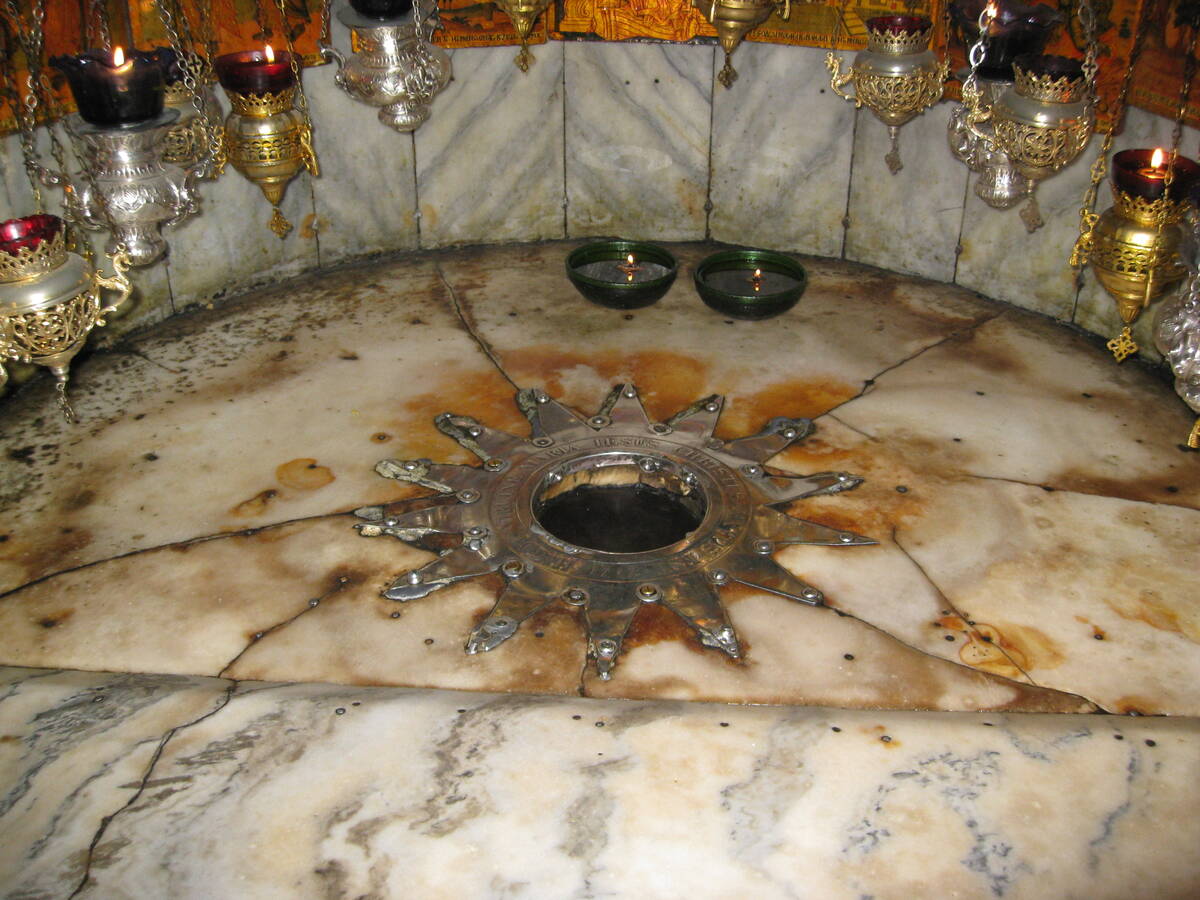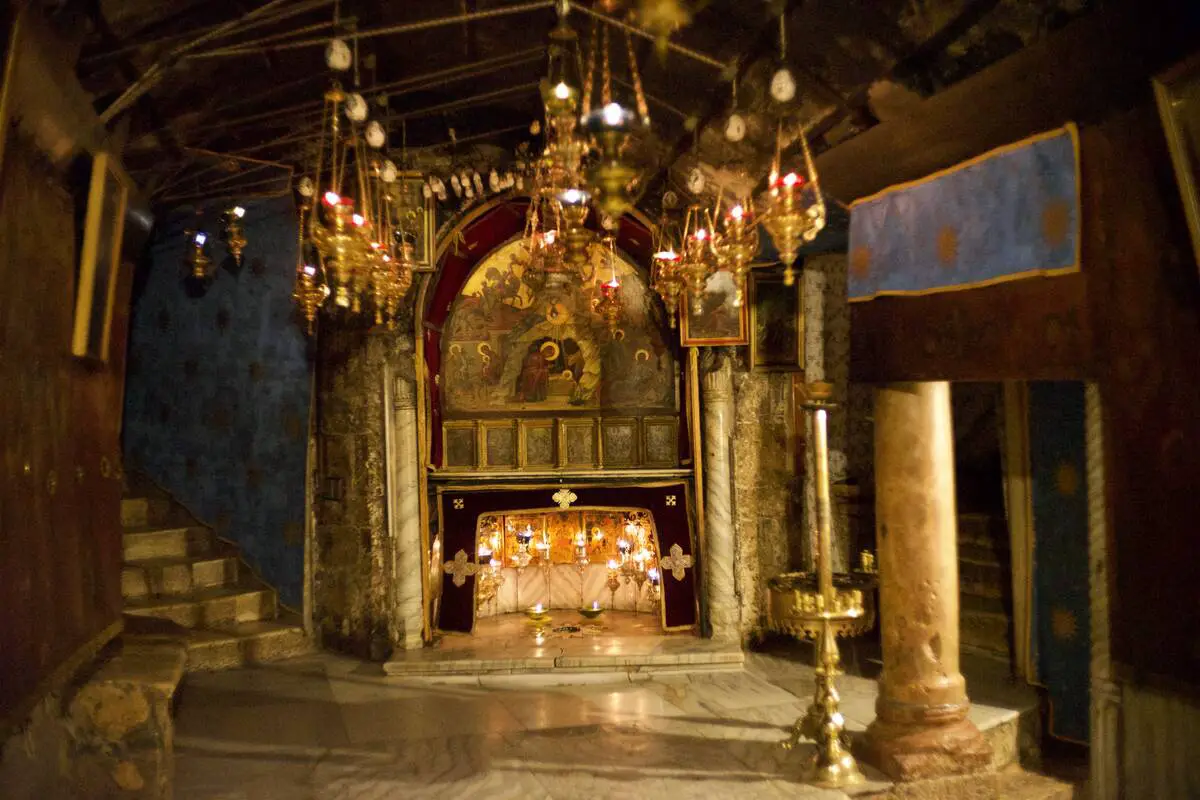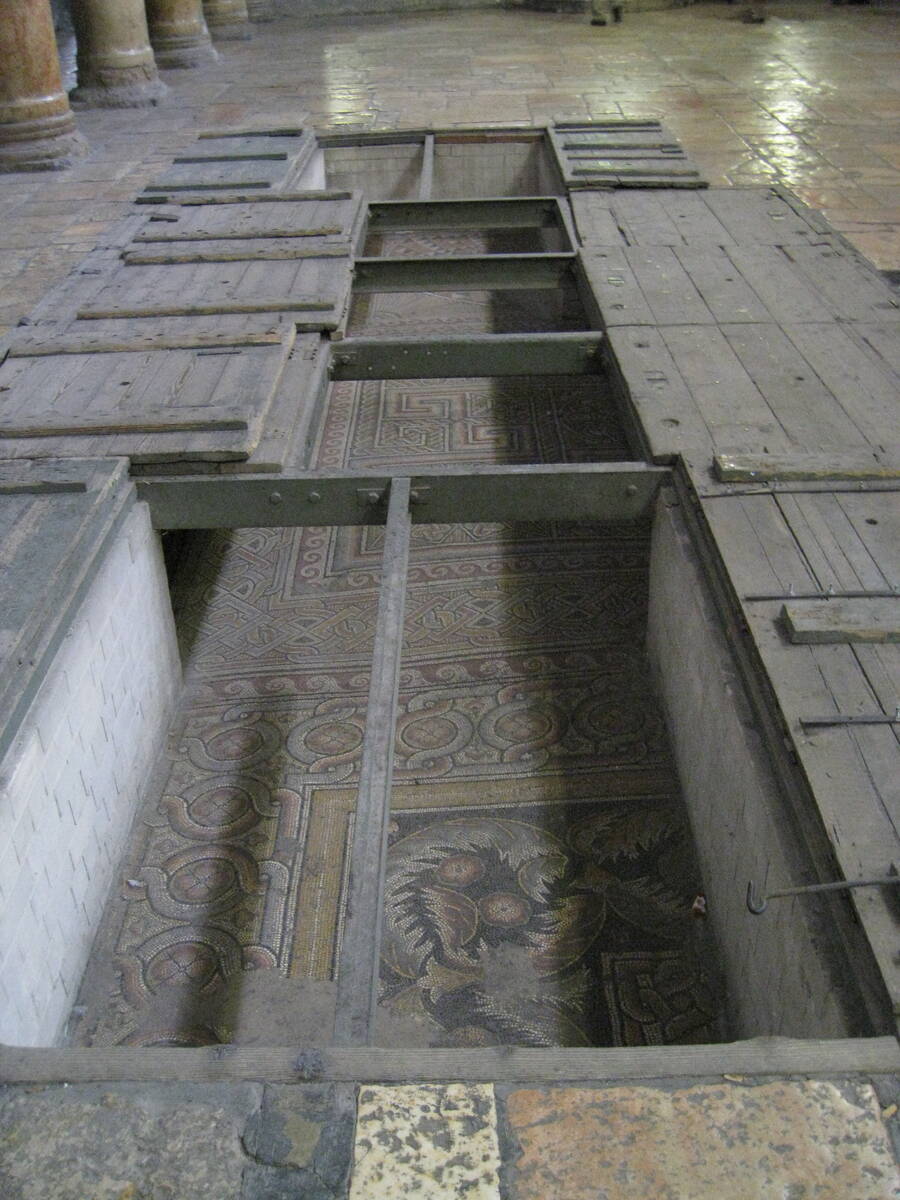World 🢖 Asia 🢖 Palestine 🢖 West Bank
Churches 🢔 Religious architecture 🢔 Architectural wonders 🢔 Categories of wonders
Wonder
Church of the Nativity with the Nativity Grotto
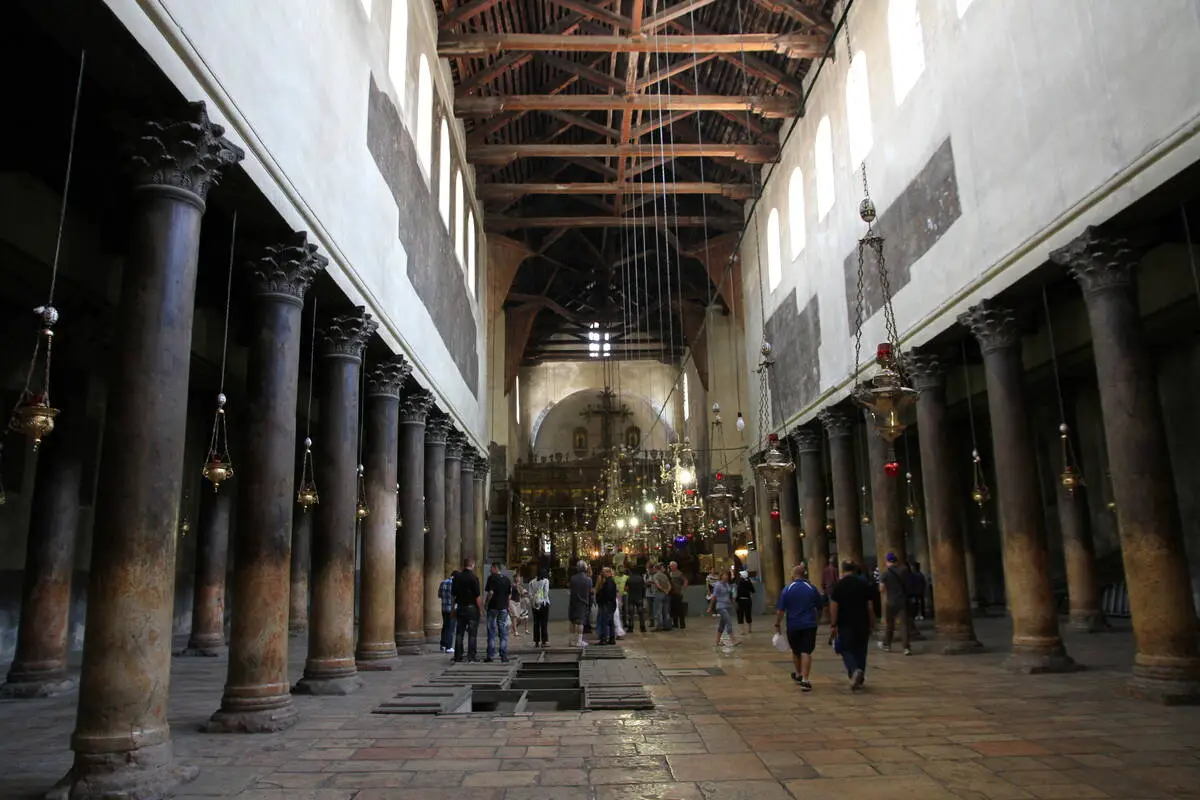
 In short
In short
One of the most important monuments for the Christian faith is the Church of the Nativity – the possible birthplace of Jesus and also one of the oldest churches in the world. The first church was built there between 330 and 333 AD.
 51.4%
51.4%
GPS coordinates
Name in locally important languages
Alternate name
Year of construction
Branch of Christianity
UNESCO World Heritage status
Map of the site
If you see this after your page is loaded completely, leafletJS files are missing.
 In detail
In detail
The ancient town of Bethlehem is like a myth – its name is known to everyone in the Christian world through Christmas carols and sermons in the church.
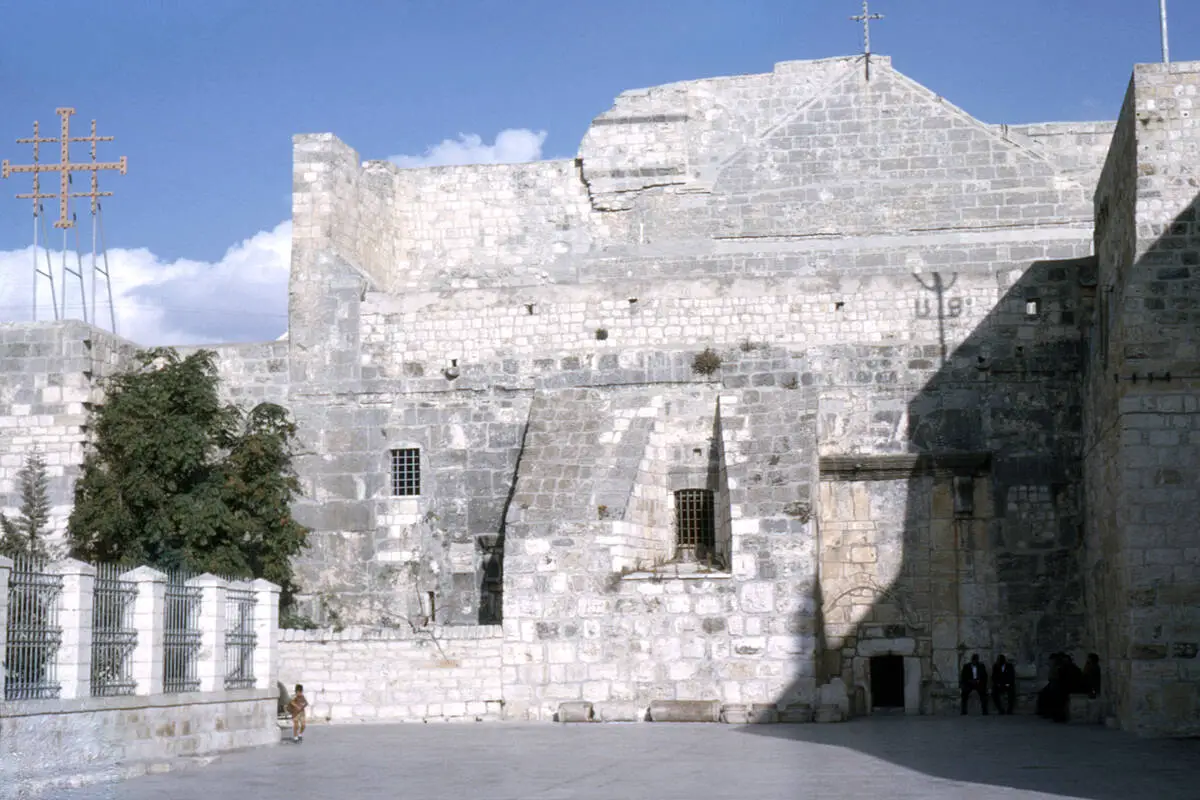
This town exists in reality and the history of Bethlehem started millennia ago. But the most important event in the history of Bethlehem is the purported birth of reportedly, the most significant person in world history: Jesus.
We can not be sure whether Jesus was born there indeed – Nazareth is another credible location. Nevertheless, above the small rock-cut chamber, where he, according to a legend, was born, was built one of the oldest churches in the world – Church of the Nativity.
Throughout the centuries around this key location for Christianity was built a whole complex of structures – other churches and monasteries. It is one of the most important locations for Christian pilgrimage.
History of the Church of the Nativity
The history of this outstanding structure is very complex. There are numerous written sources since ancient times but, unfortunately, this multitude of writings is confusing and frequently, contradictory.
Beginnings
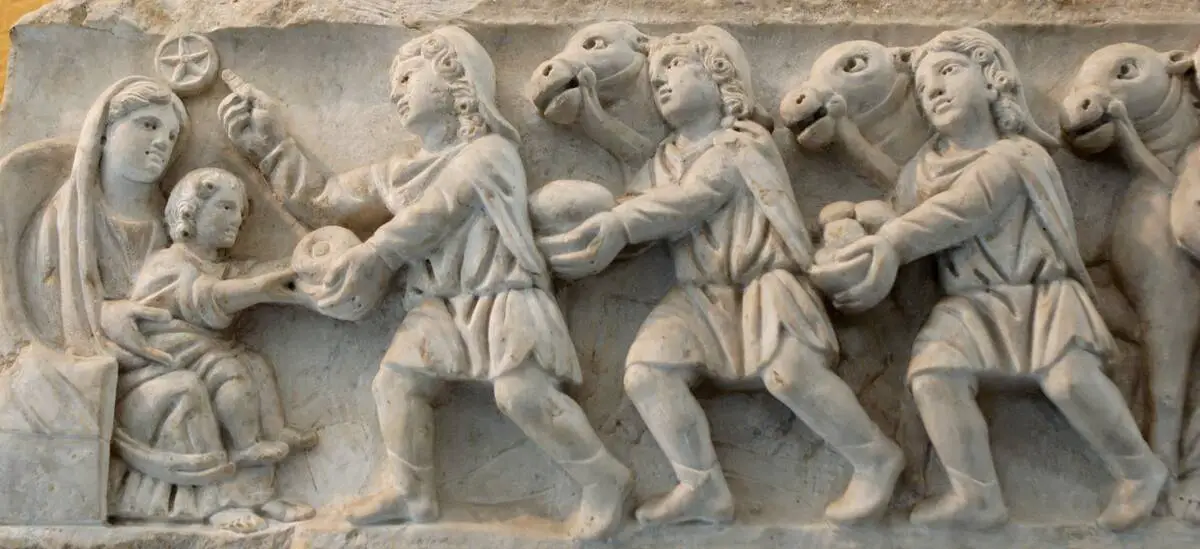
- Between 6 and 4 BC – according to the Gospels of Matthew and Luke, in a cave (most likely – man-made) on the outskirts of Bethlehem town was born Jesus. Joseph and Mary, reportedly, came there to participate in the Roman-organized census, as Joseph was born in this town. There is a possibility that Jesus was born in Nazareth instead (indirect hint at this by the earliest gospel – Gospel of Mark). But, if he was born in Bethlehem, he and his family did not stay there for long. Nevertheless, the tradition of the Nativity is linked to Bethlehem and this tradition has become one of the most important elements of Christianity.
- Time period until 320ies – already the early church considered Bethlehem to be the birthplace of Jesus and the birth cave – Nativity Grotto – was well known among Christians.
- 135 – in an attempt to wipe out the story of Jesus’ birth, Emperor Hadrian orders the creation of the shrine for Adonis with a sacred grove. Nevertheless, this does not replace the Biblical myth among believers.
The first church
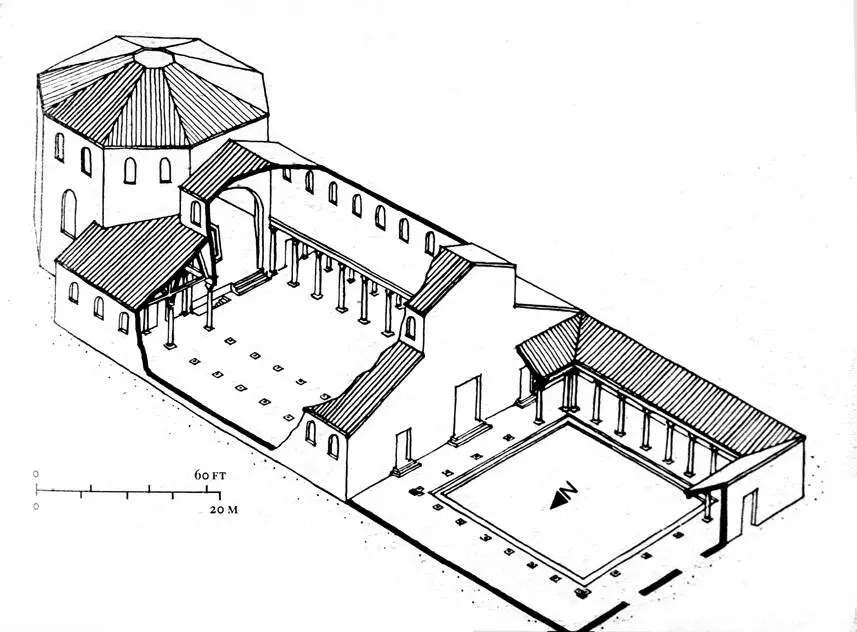
- 325-326 – in search of Christian relics, Helena, mother of Roman Emperor Constantine the Great, made the pilgrimage to Palestine. Based on her finds, the construction of the first official churches (“Helena churches”) was started in several places, including Bethlehem.
- Around 326 – the time period between 330 and 333 – upon the order of Constantine the Great a basilica was built at the purported site of the birth of Jesus in Bethlehem. The church was first mentioned in 333. This was a sumptuous structure, but, nevertheless, the main attraction of multiple pilgrims there was the Nativity Grotto under it.
- 384 – 420 – Saint Jerome lived in Bethlehem and translated the Bible into Latin and created numerous influential treatises on Christian morality. According to a legend, St. Jerome often meditated in the rock-cut chamber near the birthplace of Jesus – now this chamber is named St. Jerome’s Cave. In his time the first monastery was built near the church.
- Sixth century, possibly in 529 or in 556 – the first basilica, most likely, was destroyed by fire during the violent Samaritan revolts. Nevertheless, it is considered that the Church of the Nativity is the oldest continuously used church building in the world: the location, planning, and some parts of the church – the mosaic floor below the current floor and some parts of the walls – have been preserved.
The Justinian church
- Second half of the 6th century, before 565 – the present-day church was built in the times of Emperor Justinian. This church building in general followed the plan of the previous one but is larger.
- 614 – nearly all the churches were demolished during the Persian invasion of Palestine. Church of the Nativity was spared by a chance. According to a legend, the commander of the Persian army, Shahrbaraz, ordered to keep the church intact thanks to a large mosaic that depicted the Three Magi in Zoroastrian garbs.
- 1009 – caliph al-Hakim ordered the destruction of Christian sanctuaries in the region. Church of the Nativity again was spared by luck, as it was an important shrine for Muslims as well.
Time of Crusades
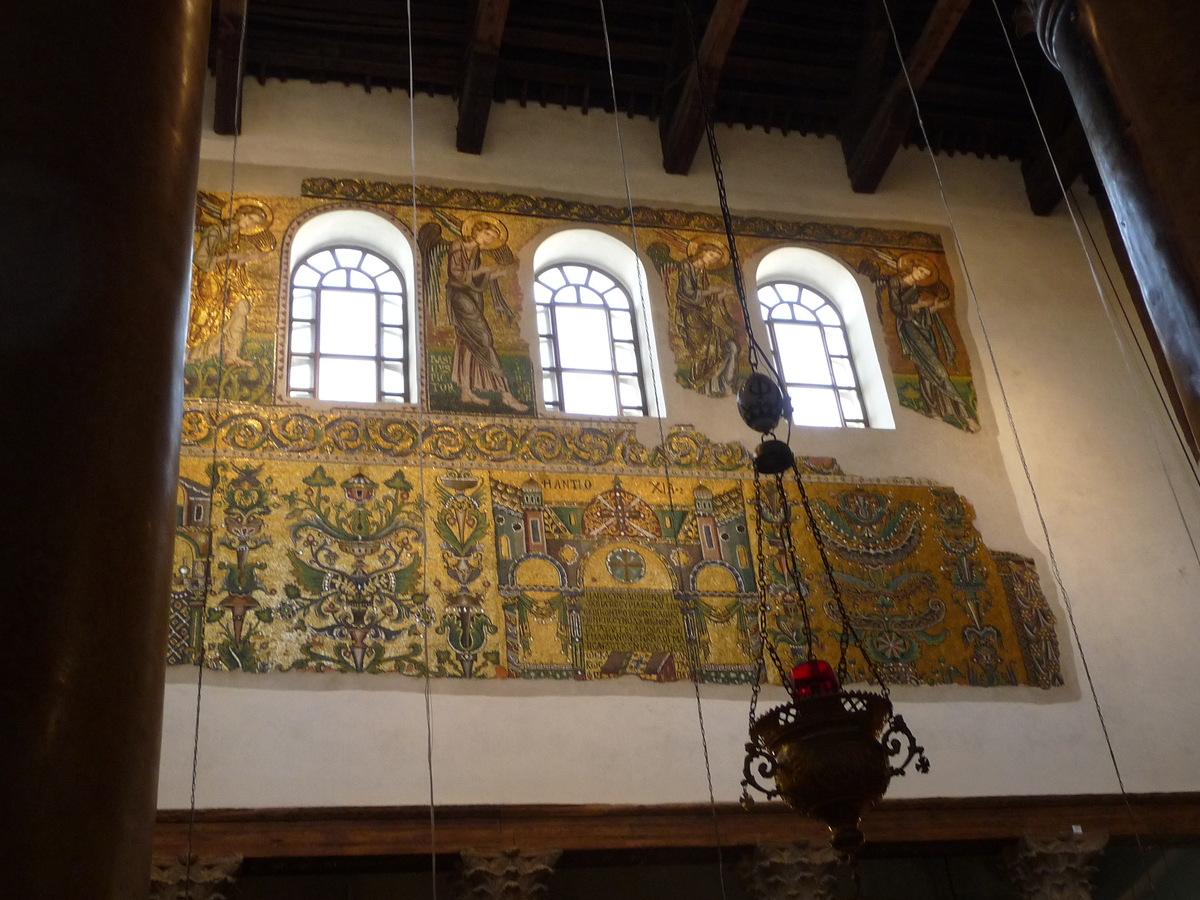
- 1100 – 1131 – the church was the primary coronation church for Crusader kings. Due to frequent warfare in the region, the church was reinforced.
- 1165-1169 – restoration and redecoration. The columns and walls of the church were covered with paintings and mosaics. Church of the Nativity was regarded to be the most beautiful structure in the Holy Land.
- 1187 – Jerusalem and vicinities, including Bethlehem, fell to Saladin, Sultan of Egypt. Church did not suffer and ceremonies in the church continued from 1192.
- 1244 – the attack of Turks devastated the church but the structure of the building persisted. Before the attack, the church treasures were hidden underground and rediscovered only in 1863.
Newer times
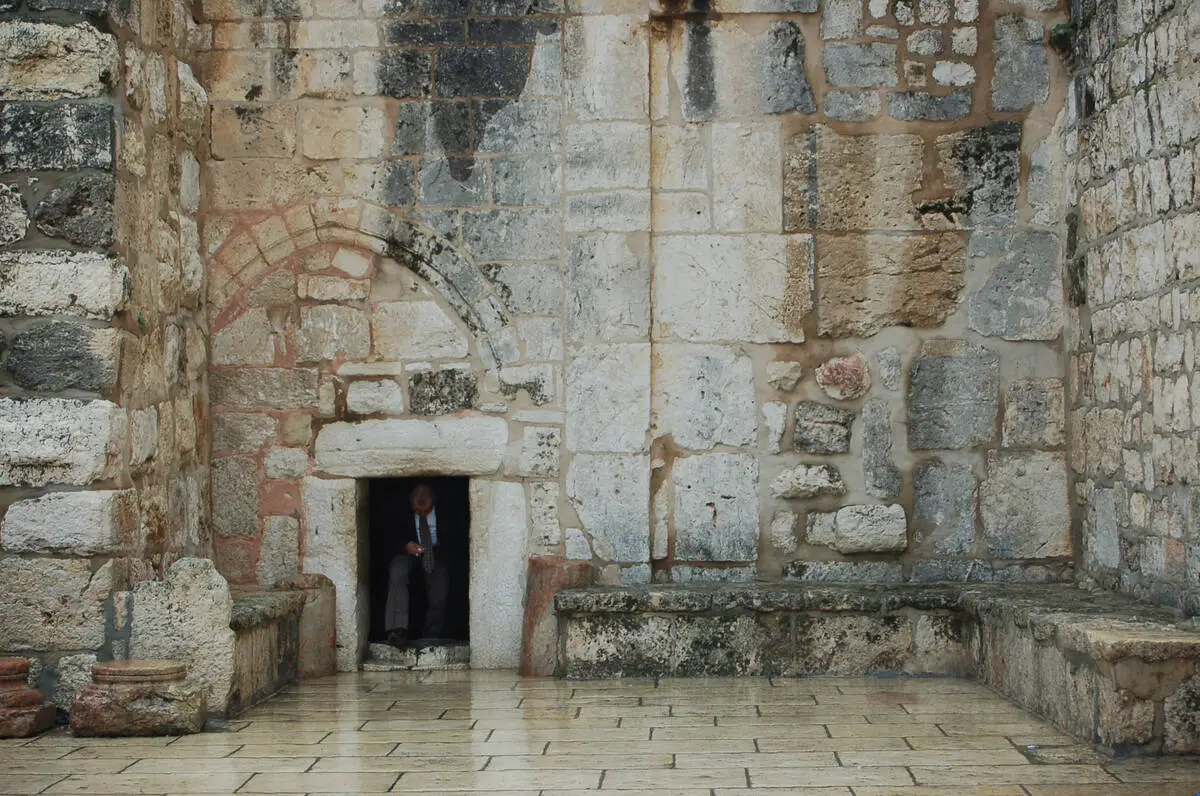
- Late 13th century – the dilapidation of the church started, and many of the formerly ornate interior details were lost.
- 1347 – the Franciscan order got the ownership of the former monastery building at the church, north of it. To a large extent, they controlled the complex of the Church of the Nativity until 1637.
- 16th century – early 17th century – the decay of the church during the rule of the Turkish Empire. To keep mounted horsemen (and also cattle) out from the main part of the church, the main entrance was walled up, leaving a small entrance – the “Door of Humility”. This 130 cm high and 78 cm wide door is the main entrance up to this day.
- 1621 – Armenian monastery was founded south from the main courtyard of the church.
- 1637 – second half of the 17th century – the Greek Orthodox church gained control over the church and the renovations of the interior were done.
- 1757 – period of renewed Franciscan control over the church ended this year and the Greek Orthodox church gained full control. Extensive renovation and rebuilding ensued.
- 1834, 1836, 1837 – series of earthquakes demolished the church tower and damaged the church itself. In 1842 restoration works were done by Greek monks. Among other works, the original mosaic floor was covered with soil and massive flagstones.
- October 1847 – the silver star that marked the purported site of the birth of Jesus, was removed by Greek monks: they saw this Catholic-made artifact as blasphemy to this sacred place.
- 1852 – Napoleon III forced the Ottoman Turks to return the silver star, creating irritation among the Orthodox Christians and deteriorating the relations between Ottoman and Russian Empire.
- April 2002 – around 50 armed Palestinians took refuge in the church from the Israel Defense Forces. This lasted for a month.
- 2013-2020 – extensive restoration of the church.
Description of the church
Bethlehem town is located some 10 km south of the Jerusalem Old City.
Nativity Grotto and other rock-cut caves
The town is located in limestone hills. Grottoes were hewn in the limestone by people, most likely, for household needs. It is possible that some caves formed there in a natural way as well.
Nativity Grotto has a rectangular shape with an east-west alignment. Since the possible birth of Jesus, it has been transformed and adorned. Now it can be accessed from two sides – above the former entrance is the altar.
The Nativity Grotto is a part of a network of rock-cut passages and rooms. A passage leads to St. Jerome’s Cave under the St. Catherine church (another church next to the Church of the Nativity). This passage usually is closed.
The niche, where, supposedly, was born Jesus, is marked with a silver star with 14 points. In the middle of the star is a hole where one can reach the original stone where Mary gave birth.
This is one of the oldest Christian pilgrimage destinations in the world – even the Cenacle, the site of the Last Supper and several more important locations in Jerusalem were recognized as sites of pilgrimage only around the 4th century AD.
There are other shrines in cave rooms – the Chapel of Saint Joseph, and the Chapel of the Innocents, in the passages are rock-cut tombs and remnants of many deceased people.
The church and monasteries
The church was built over the Nativity Grotto to provide the location for religious rituals in this sacred place. This is the oldest surviving church in the Holy Land.
Some details of the original 4th-century church survive up to this day. The mosaic floor from 330 AD is covered with flagstones, but there is an opening to see a part of it.
Main parts of the church are the altar part with the Nativity Grotto under it and the nave that is divided into four rows of pillars. In total, there are 44 pillars. During the Middle Ages, 28 columns were covered with frescoes and inscriptions but most of these drawings have faded. Likewise, the walls of the church were covered with mosaics. Today just a few fragments of this former splendor remain.
In the altar part is a chancel and on both sides of it are stairways that lead down to the Nativity Grotto.
Over the centuries this church has grown into an enormous complex of buildings with three monasteries: Roman Catholic (Franciscan) to the north, Armenian Apostolic to the southwest, and Greek Orthodox to the southeast. Accordingly, the church is governed by the authorities of these monasteries, as well as the Coptic Orthodox and Syriac Orthodox.
Next to the Church of the Nativity is another church – the Catholic Church of St. Catherine. Both churches are facing the main square of Bethlehem – Manger Square.
References
- Qustandi Shomali, Church of the Nativity: History & Structure. Accessed on November 12, 2022.
- Bethlehem – Basilica of the Nativity. Accessed on November 12, 2022.
Church of the Nativity is included in the following article:
 Linked articles
Linked articles
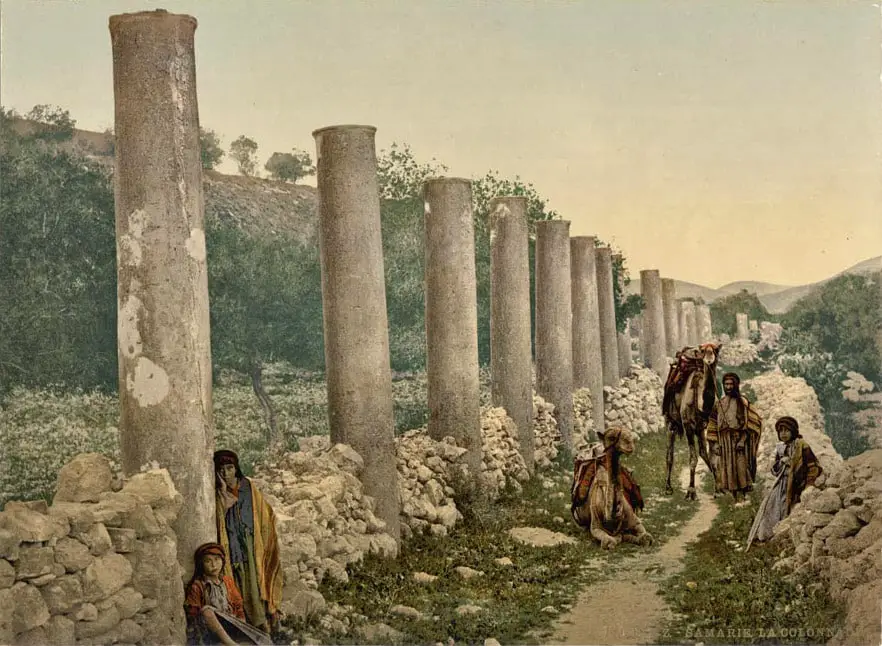
Wonders of Palestine
Palestinian territories (or better simply – Palestine) has very special landmarks. This land has experienced the birth of Judaism and Christian religions and plays a very important role also for Muslims. Billions of people see this land as the place of divine presence, with many sites linked to events of extremely high importance for believers and historians.
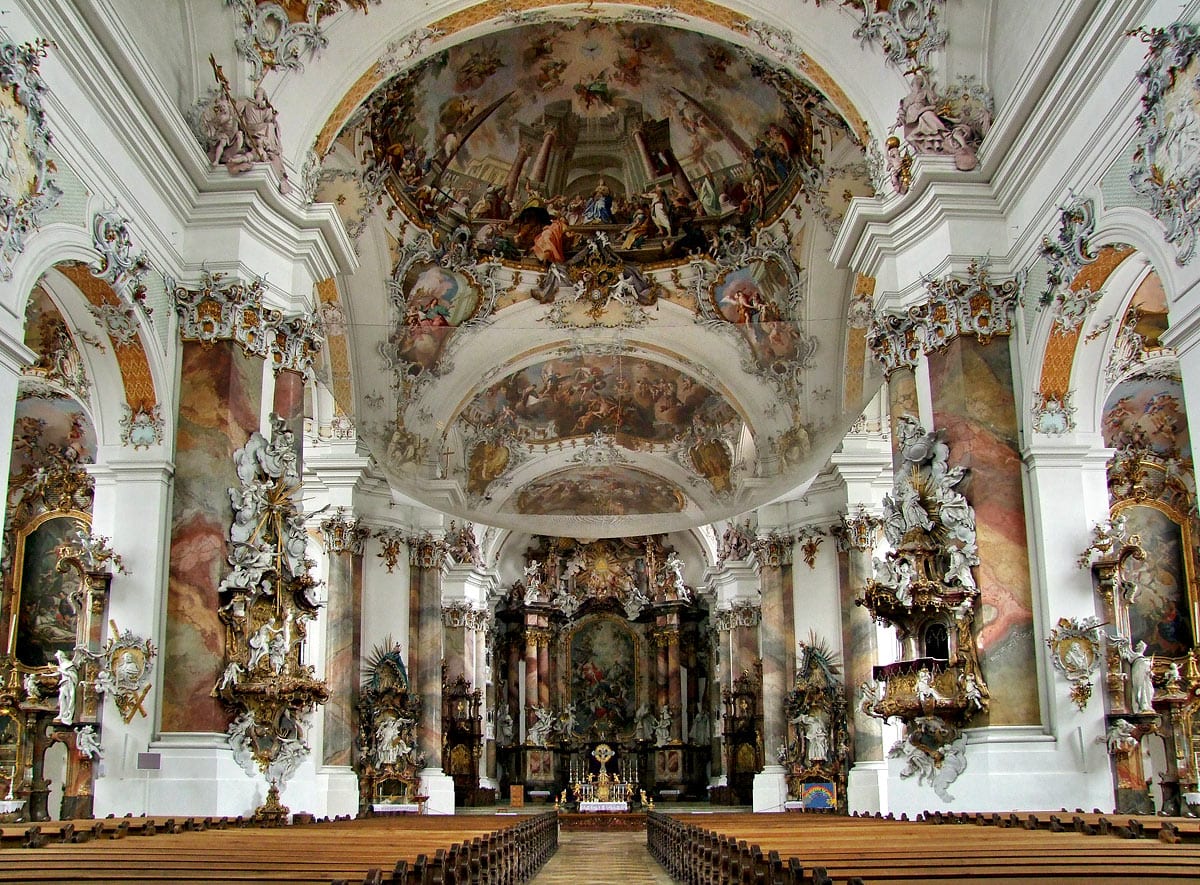
Churches
Throughout the millennia Christian churches have been the epitome of architecture and arts achievements in Western culture.
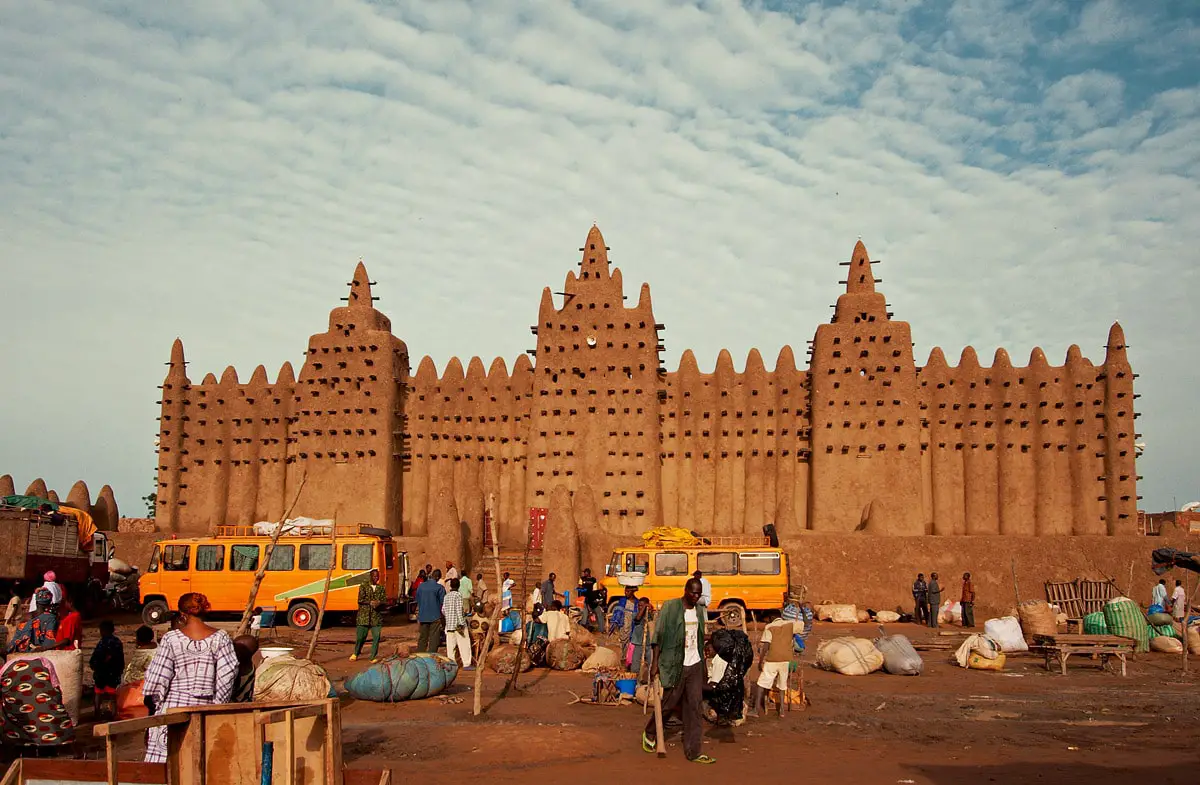
Religious architecture
Since ancient times human talents and skills have been expressed in religious architecture and arts, and traditions and rituals have evolved around pilgrimage sites. Religious buildings represent a major part of the highest achievements in architecture and crafts.
 Recommended books
Recommended books
The Church of the Nativity
This is the first comprehensive guide book written about Bethlehem’s Church of the Nativity, based on the latest scholarly research, yet designed for a popular audience. Jerusalem’s legendary photographer Garo Nalbandian provides color photographs of every section of the church complex, its mosaics and painted columns, artifacts from different eras, and glimpses of sites not usually available for public viewing.
Rose Book of Bible Charts, Maps, and Time Lines
The #1 Bible reference book celebrates its 10th anniversary with an updated 230-page edition that features more Bible maps, charts, and illustrations than the original! This stunning, easy-to-understand reference book still provides the same full-color, REPRODUCIBLE Bible charts and overviews that made the original a favorite, but in an easier-to-use, updated format!

